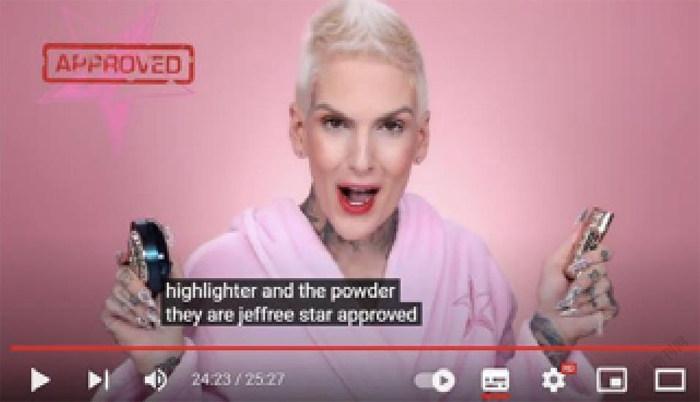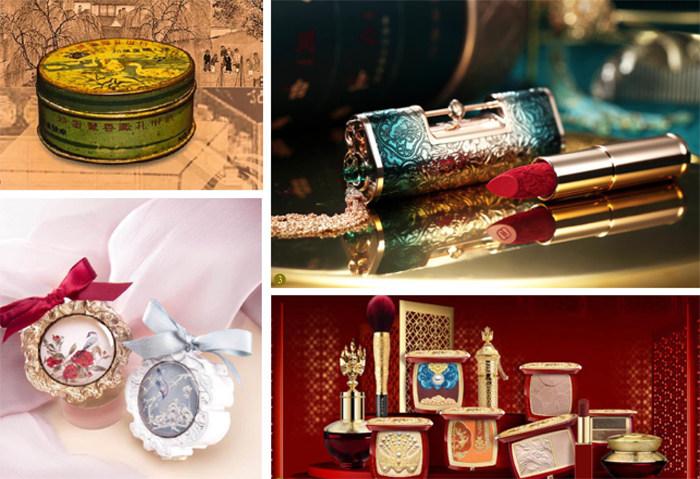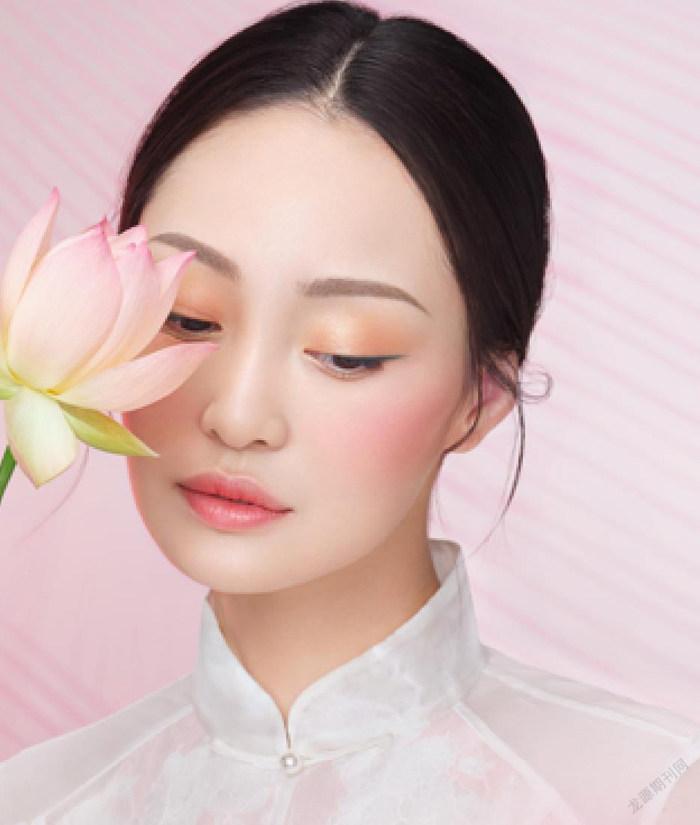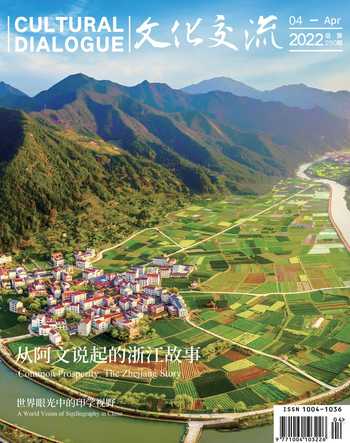浙产彩妆的万变与坚守
朱子墨



2022年1月,拥有Youtube1000多万粉丝、美国顶流美妆博主“J姐”Jeffree Star 在社交网站上推送了新年第一个美妆测评视频,这是他时隔8个月之后的首次更新。没想到这样的“首秀”献给了中国国货、浙产彩妆品牌花西子——源自苏轼那句流芳百世的诗词:“欲把西湖比西子,淡妆浓抹总相宜”。
一些网友猜测,这次是不是“中国品牌给太多了?”熟悉“J姐”的粉丝可能会笑了,“这还真不是花钱能解决的事”。除了出色的业务能力以及自创的品牌成为美国十大彩妆品牌之一之外,敢说敢骂敢做从来都是让他成为全球豪气网红的绝招,他曾经怒撕卡戴珊家族小女儿、人称“金小妹”的凯莉 · 詹娜名下品牌的天价彩妆刷,让吃瓜观众们看得那叫一个热闹。而且,Jeffree Star并不是向来都买中国产品的账,他早在2018年的一次测评中就直言不讳地对一款美妆产品进行过吐槽;而在4年后,虽然不是对每款都予以好评,但他看到中国美妆产品从美学到产品力的提升,毫不吝啬地给了其中几款特色产品高度的赞誉。
其实,花西子并不是第一个“出圈”的浙产彩妆品牌。浙产美妆的品牌文化历史最早可以追溯到清同治元年。
浙产彩妆溯源:宫粉首推孔凤春
“胭脂彩夺孙源茂,宫粉首推孔凤春。北地南朝好颜色,蛾眉淡埽更何人。”这是清代《武林市肆吟》里对孔凤春宫粉盛行的描述。公元1862年农历三月十六的清晨,杭州河坊街四拐角的一家名为“孔记香粉店”的商铺在鞭炮声中热闹开张。萧山人孔氏三兄弟换上新做的长袍马褂,在商铺门旁笑脸相迎,对着前来光顾的客人热情作揖。
之后,“孔记香粉店”改店名为“孔凤春”,孔即是孔雀,凤即是凤凰,春意味着万物复苏,山花烂漫,生机勃勃。在当时商铺林立的河坊街上,店里的明星产品如珍珠膏、玉兰粉、生发油和传闻中深得慈禧喜爱的鹅蛋粉都供不应求。至此,孔凤春成为中国历史上记载的第一家化妆品企业。
鹅蛋粉是孔氏独家研制,把石粉和铅粉经过反复漂洗沉淀过滤,再融入蛋清,粉质细腻光滑,又融入了鲜花熏香,让它一跃成为皇家贡品。据传,一次鹅蛋粉用完了,慈禧在储秀宫大发脾气,李莲英赶忙连夜电谕杭州制造局,火速将鹅蛋粉送进京,这才平息了风波。
20世纪初的二三十年里,是孔凤春发展最辉煌的时代。有史料记载,每逢农歷二月农闲时,孔凤春需要接待400艘香船,大概有1.6万人,往往店门还没有开,门口就挤满了人,从大清早热闹到晚上,营业时间长达10多个小时。
还有一个有趣的故事,登载于1985年的《杭州日报》上,报道的是国家海洋局第二海洋研究所助理研究员蒋加伦在南极爱丽丝海峡考察时不幸落水,严重冻伤的手脚在孔凤春珍珠霜的滋养下竟然得到恢复,避免了手指和脚趾因坏死而被截去。
在对美浅尝辄止的年代里,能买到用上孔凤春似乎是一件特别有面子的事,一些传统杭州老太们至今仍是孔凤春的死忠粉,依然对青春年少时捧着自家容器在河坊街排队称重买香膏的场景记忆犹新。那样的画面也成为这座城市集体记忆中的一个珍贵剪影。
浙产彩妆奋斗史:万变与坚守
自孔凤春扬名四海之后,浙产美妆又经历了三个不同的崭新纪元,每一个阶段既是更迭史,也是奋斗史,更是中国女性不断追求美的励志史。
第一个阶段发生在20世纪80年代,1988年,以孔凤春与日本国株式会社高丝成立合资公司——春丝丽有限公司为标志,浙江开始出现一批国际化妆品大牌的代工厂,成为化妆界的富士康。而“高丝中国首家代工厂”这一身份又催生出如今年销3亿的代工巨头——心悦化妆品有限公司,与欧莱雅、迪奥、LG等诸多国际大牌都建立了合作关系。前几年,心悦还走出国门,在日本收购了一家拥有化妆品专利的化妆品贸易公司。
第二个阶段则始于20世纪90年代末,一些代工厂和美妆从业者开始积极谋求转型,因而诞生并涌现出一批如毛戈平、珀莱雅、欧诗漫等自主品牌,并逐步跻身国内头部化妆品品牌阵营。
近几年,由于既拥有成熟化妆品供应链,又在电商运营、推广上占据先天优势,浙江美妆再次开启第三个新纪元。如杭州高浪,陆续孵化了来自日本、韩国、西班牙等国50多个品牌,包括现在中国女性消费者中有一定知名度的韩国SNP、日本院线级品牌Bb laboratories、西班牙品牌sesderma等;再比如新晋国货品牌、浙产美妆花西子、俊平JUNPING、花知晓等,让越来越多的国内甚至国外年轻人通过小红书、抖音、微博、Youtube等各大社交平台频频被种草。
无论是纵向比较浙产美妆发展历史,还是横向观察各个热门品牌的特点,都不难发现其实有一条若隐若现的脉络贯穿其中,也正是顺着这条脉络,让我们在万变的时代发展和个体进化中能一下子找到浙产彩妆那个不变的“根”,而之所以称之为“根”,是因为它源于一种思想精神文化上的坚守,即崇尚专业匠心和推崇中华美学。可以肯定的是,这两点在使我们对自己的品牌越来越自信这一过程中起到关键性作用。
在一次采访中,“毛戈平”品牌创始人、中国知名化妆师毛戈平分享了产品开发背后的故事,把高光涂在自己脸上,取暖器开到最大档,测试室温40℃时,两个小时会有什么变化。“中国人的肤质跟欧美人不一样,是偏干和混合性为主,欧美人偏油,我们的基底粉底护肤品配料就应该不一样。色彩更不一样,欧美人白色偏粉,我们是黄色偏橄榄绿;但是中国审美以白为美,但应该是瓷白,有润度,有光感,光感是透明的,在色彩上和欧洲系统是不一样的。”毛戈平介绍说。
2009年,取得美国麻省理工化学博士的叶琳琳放弃了在联合利华的高薪待遇,回国创立杭州雅妍化妆品有限公司,并组建了自己的团队和实验室,在原料、配合开发和功能检测等方面都拥有较强的竞争力。
这两年,一些浙产老字号中医国药老店也纷纷试水“跨界”化妆品业。如百年老字号、由晚清“红顶商人”胡雪岩创立并与北京同仁堂齐名的胡庆余堂,联合浙江大学现代中药研究所共同开发,已经推出了20个品类的中草药方的化妆品。
专业是品牌的生命,而在如何向国内外市场推广专业好东西上,浙产彩妆的实践也提供了可借鉴的经验。其中一个反复被提及的品牌就是花西子。
2021年3月,花西子正式开启自己的出海之路,同心锁口红上线首日便挺进了日本亚马逊口红销售榜小时榜前三。同心锁口红融合了传统雕刻工艺与彩妆生产,口红膏体描绘的是中国传统文化故事,口红色号也彰显东方古典范儿——伯牙绣、绛仙绣和香妃绣。
再比如,主打少女心的花知晓曾被认为是小众风格,难以与体现传统文化的国风相结合,但从这几年在产品设计方面的尝试来看,如融入牡丹、兰花、鸟等国画元素,并选择浮雕的彩妆盘边缘和饱和度较低的莫兰迪色系,至少能说明品牌特色——少女这个主题也可以包罗万象,且收获了不错的效果。
近年来可以看到的一个令人欣喜的变化是,这些新晋浙产彩妆品牌在Youtube、Instagram以及Twitter等海外主流社交平台上的曝光率和被认可度正在逐年提升。
“中国妆”:自我定义与走向国际
也正是因为中国彩妆品牌在海外知名度日益增长,引发了一些国外网友对“中国妆”特点的探讨和兴趣。
中国的妆容文化历史绵长且多元,尤其受朝代风气、地域文化、场景需求、民族特色等元素影响,可追溯到历史的妆容非常繁多,因此去定义一个妆容标准也不是一件易事。
而让这些中国彩妆行业领军者心照不宣的是,这件难事必须我们自己去做,在担负起自我定义“中国妆”这一任重道远的使命上,每一个参与中国彩妆品牌奋斗史的个人和集体都责无旁贷且必不可少。
值得一提的是,一些浙产彩妆品牌已经开始了争取对“中国妆”定义主导权的探索之路,有业内人士因此提炼出细长眉、眼下彩和点朱唇这三个具有东方时尚感的妆容要素。细长眉不同于欧美式的挑眉、韩式平眉,是彰显温和而自信的细长眉;眼下彩指的是中国古典妆容重眉妆而不重眼妆,又因胭脂广泛应用于眼下颊上,故称“眼下彩”;点朱唇则是因为大部分时期中国古代的唇妆都讲究盖住边缘往小画,打造樱桃小口,取其边去其型。
虽然目前行业对“中国妆”还没有明确的定义,但随着中国彩妆国货品牌不断走向国际,同时在这过程中不断交流、学习、借鉴并缩小与国际大牌彩妆之间的差距,相信这一定义将越来越清晰地展现在世人面前。期待越来越多的世界友人能通过欣赏具有中华文化之美的“中國妆”妆容,感受到中国源远流长、开放包容、富有魅力、充满自信的文化土壤和审美情趣。
In January 2022, Jeffree Star, one of the US cosmetics reviewers on Youtube with more than 10 million followers, posted a new year review video on his YouTube channel. This was his first update in eight months and his fans wondered why this “first show-up” was about a Chinese makeup brand named Florasis (Huaxizi). Jeffree called it the “MOST beautiful makeup” in its title. Florasis is an emerging Chinese cosmetic brand made in Zhejiang province. Its name is derived from a famous Chinese verse written by Su Dongpo (1037-1101), one of the most renowned Chinese poets, in the Song dynasty (960-1279). “The West Lake looks like the fair lady at her best. Whether she is with light or heavy makeup.”
Why did Jeffree choose Florasis as his first release in the new year? As the founder and owner of one of the top 10 American makeup brands, Jeffree is not only recognized for his outstanding marketing skills, but more importantly, for his brutal honesty. He never gets paid to say something on his channel. He once posted a negative review on Kylie Cosmetics brush set, which was liked by more than 14 million followers and he also criticized a Chinese makeup product in 2018. However, four years later, another Chinese brand Florasis got his approval all because of its gorgeous product design and high quality.
In fact, Florasis is not the first Zhejiang cosmetic brand that has gained global recognition. Zhejiang’s cosmetic industry and its cultural history can be dated back to 1862 in the Qing dynasty (1616-1911).
Kophenix was the most popular cosmetic brand in the Qing dynasty and its signature goose-egg foundation powder was widely used in the imperial court. Its great reputation is clearly reflected in a well-known verse: “Blushes Sun Yuanmao the best, while foundation powder certainly be Kophenix. Enjoying fair skin north and south, an attractive makeup easily occurs with just one slight touch on the eyebrows.” On the early morning of April 14, 1862, a makeup store named Kong’s Powder was grandly opened on Hefang Street in the city of Hangzhou. The co-founders, three Kong brothers in their Sunday best, smiled and bowed at the gate, greeting customers.
Later on, the store changed its name into Kophenix. Ko stands for peacocks, and together with phoenix, it carries the meaning of rebirth and vitality. Kong’s star products such as pearl cream, magnolia powder, hair nourishing oil and the goose-egg foundation powder were so popular that they were often in short supply. Kophenix goose-egg foundation powder was exclusively produced by the Kong family. They mixed goose egg white into well-filtered talc and lead powder, making the powder extra fine and smooth. With its unique touch and flower smell, it soon became the prevailing cosmetic product in the imperial palace and highly praised by Empress Dowager Cixi (1835-1908). Then Kophenix became the first cosmetic enterprise in Chinese written history.
The early 20th century witnessed Kophenix’s most glorious era. More than 400 ships and 16,000 customers came to the store in March alone. The store had to keep open for more than 10 hours a day. Its pearl cream even saved Chinese Antarctic explorer Jiang Jialun’s fingers and toes, which were damaged by freezing water in 1985. At that time, a Kophenix product was so fashionable that many local Hangzhou ladies have been loyal customers ever since. They can still clearly remember that they brought their own containers and lined up outside the store on Hefang Street when they were young.
After Kophenix became well-known all over the world, Zhejiang cosmetic industry experienced three developing stages, and each stage alone was a history of change, of struggle and of consistent pursuit of beauty.
The first stage was in the 1980s. In 1988, Kophenix established a joint venture with Kose Corporate Japan named Chunsili. From then on, a great number of international cosmetic OEMs emerged, making Zhejiang the “Foxconn” in cosmetic industry. As the first OEM in China, Kose kept developing and expanded its business into a new cosmetic company named Sincere. With an annual sale of 300 million, Sincere has established cooperation with international brands like L’Oreal, Dior and LG. It also purchased a cosmetic trading company in Japan years ago.
The second stage started from the late 1990s. Some OEMs transformed successfully into self-owned brands, such as Maogeping, Proya and OSM. In the recent years, based on its mature supply chains and inborn advantages in e-commerce, Zhejiang cosmetic industry has entered its third new stage. Hangzhou GoLong has incubated more than 50 international brands, such as SNP from Korea, Bb Laboratories from Japan and Sesderma from Spain. Several Chinese brands like Florasis, JUNPING and Flower Knows are also top rated on social media all over the world.
Looking either into the history of Zhejiang cosmetic industry or into the features of each popular brand, it is easy to find the unchanged “root” supporting Zhejiang cosmetics. It is a “root” of cultural insistence on craftsmanship and Chinese aesthetics. In an interview, Mao Geping, a well-known makeup artist and founder of the Maogeping brand, told of a product development experiment. He used his highlight product on his face, turned a heater into highest temperature mode to test the product at 40℃for two hours. “Chinese people’s skins are different from those of Europeans and Americans. We have dry and combination skins while European and American skins are more oily. That is why our foundation products and skincare ingredients should be different,” Mao Geping explained. “For skin colors, it is obviously even more different. European and American skins are fair and rosy while ours are yellowish olive. But Chinese people see white as beauty, so we need to achieve porcelain white with moisture and gloss in our products.”
In 2009, Ye Linlin, a PhD in chemistry from the MIT, gave up a high salary position in Unilever and established Hangzhou Yayan Cosmetics Co. Ltd. With her own R&D team and labs, her company is highly competitive in ingredient R&D and testing. In recent years, several time-honored traditional Chinese medicine brands in Zhejiang also extended their business into cosmetic industry. For example, Hu Qingyutang, a century-old brand as famous as Beijing Tongrentang has cooperated with the Institute of Modern TCM Pharmaceutical Sciences, Zhejiang University and produced 20 cosmetic items using Chinese herbal medicine.
Craftsmanship is the life of a brand while effective global marketing strategies are equally vital. The story of cosmetic development in Zhejiang has offered us plenty of successful experience. One of the most repeatedly mentioned brands is Florasis, which opened up its market overseas in March 2021. On the first day of its launch on Amazon Japan, its signature item, a blooming rouge love lock lipstick, jumped into the Top 3 hourly sales ranking. The love lock lipstick well integrates traditional Chinese sculpture skills into cosmetics. Various ancient Chinese stories are delicately engraved onto the lipsticks, and its colors are oriental classics as well. Another example is Flower Knows, whose style was first known as a minority mainly for teenage girls. However, in the past few years, it infuses Chinese painting elements, such as peony, orchid and birds, into its product design, and produces palettes with Morandi colors, achieving impressive results as well.
There are obvious changes during the past years. New cosmetic brands are continuously showing up and being recognized by users on international social media platforms such as YouTube, Instagram and Twitter.
The increasing international recognition of Chinese makeup brands has triggered more and more interest and discussions on Chinese makeup characteristics. Based on its long history and influenced by ancient cultures, regional diversities, and ethnic features, Chinese makeup has a great variety and it is therefore not easy to settle down on one standard. However, it is our responsibility and mission to define Chinese makeup on the global stage.
It is worth mentioning that some Zhejiang cosmetic brands have already started to explore their domination in defining characteristic Chinese makeup. Some professionals propose that thin and long eyebrow, blushes under eyes and small red lip be the three main Oriental makeup elements. Different from European and American arch eyebrows and Korean straight eyebrows, Chinese thin and long eyebrow is gentle and confident. The idea of blushes under eyes is a Chinese eye makeup tradition, which emphasizes more on eyebrows than on eyes. Small red lip is also an ancient makeup style of cherry lips, only using lipstick on the center part of the lips while covering other parts with foundation powder and setting powder.
Even though there is no specific definition of Chinese makeup at the moment, Chinese makeup characteristics will certainly be much clearer with its continuous internationalization and innovation efforts. We firmly believe that more and more international friends will be able to enjoy Chinese makeup, to experience the long-standing and well-established Chinese culture, and to feel our open, attractive and confident aesthetic tastes in the near future.

